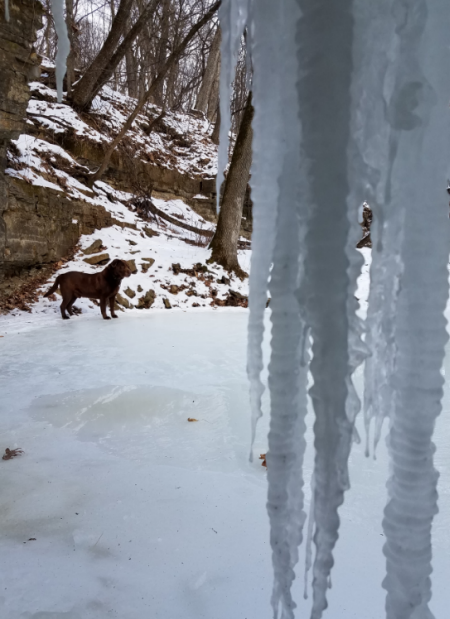Click below to listen to my 2 min. Garden Bite radio show: Dwarf trout lilies
Audio PlayerLast weekend I had the opportunity to walk in the Big Woods State Park in Nerstrand, MN. The frozen tundra that the Upper Midwest was locked in, gave us a glimpse of warm weather! WHEW, we needed that respite!

While there, a friend who lives in the area told my husband and I that the roped off areas were to protect the Minnesota dwarf trout lily, an endangered species. Now, the regular trout lily is all through those woods and it’s lovely, it’s also not endangered, but the little fellas are! The Minnesota dwarf trout lily (Erythronium propullans) is a federally endangered forest wildflower found in Rice, Goodhue, and Steele Counties, Minnesota. Because it is known only from this small area the dwarf trout lily is considered a Minnesota “endemic” – which means a species that grows in Minnesota and nowhere else on earth.
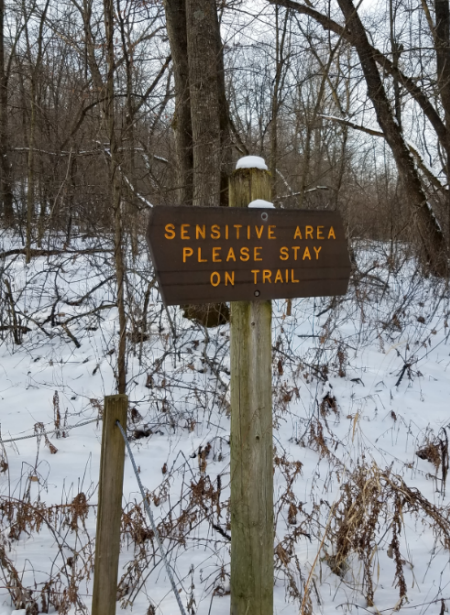
The rarity of the dwarf trout lily is probably best explained by its unusual mode of reproduction. Unlike many flowering plants, the dwarf trout lily almost never produces seed. Instead it grows from an underground bulb that renews itself annually.
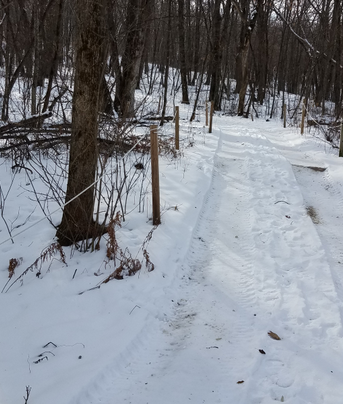
Population size is only increased when the underground stem of a flowering plant produces a single offshoot runner bearing a new bulb. Because only a small proportion of all plants flower in any given year, only about one-tenth of all plants actually produce new offspring in a given season.

It is almost impossible to distinguish trout lilies in large masses of leaves without flowers. However, flowering dwarf trout lilies are distinguished by the very small size of their flowers. Flowers of the dwarf trout lily are about the size of a dime or less, pale pink, with a variable number of perianth parts (“petals”). Most members of the lily family have 6 “petals”, but dwarf trout lilies may have four, five or six. Typically, dwarf trout lily pedicels (“stems”) are about the width of a pencil line, whereas those of white trout lilies are approximately 1 mm wide (closer to the diameter of string or a rubber band).
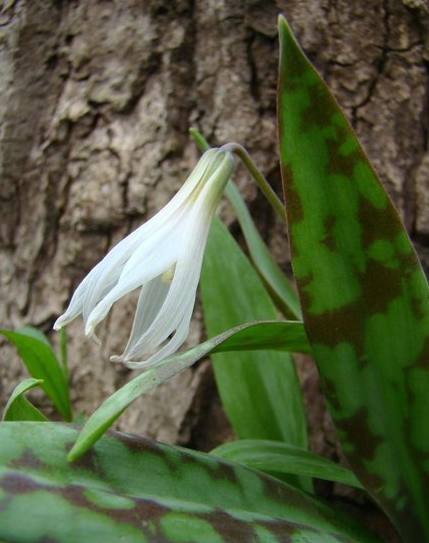
Like all native species, the Minnesota dwarf trout lily has its own specific niche in the ecosystem and relationships to other plants and animals with which it lives. As such, it is a part of the whole, a part whose unknown utility is best expressed in the words of Wisconsin conservationist Aldo Leopold: “The first rule of intelligent tinkering is to save all the parts.”
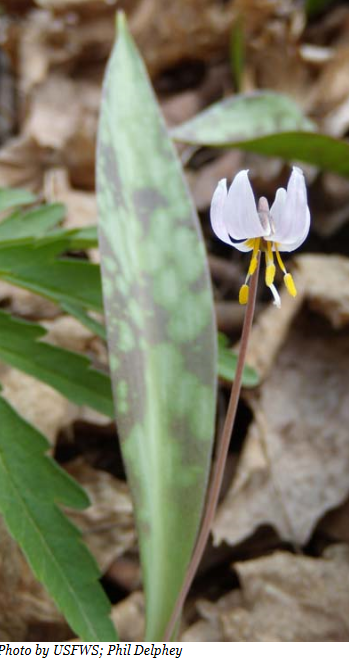
Yet more information from Minnesota Wildflowers
